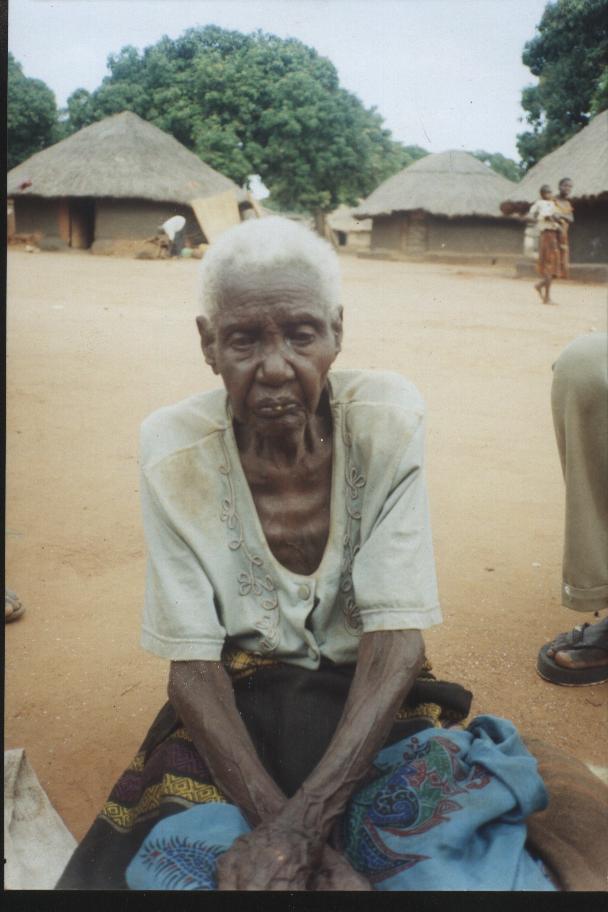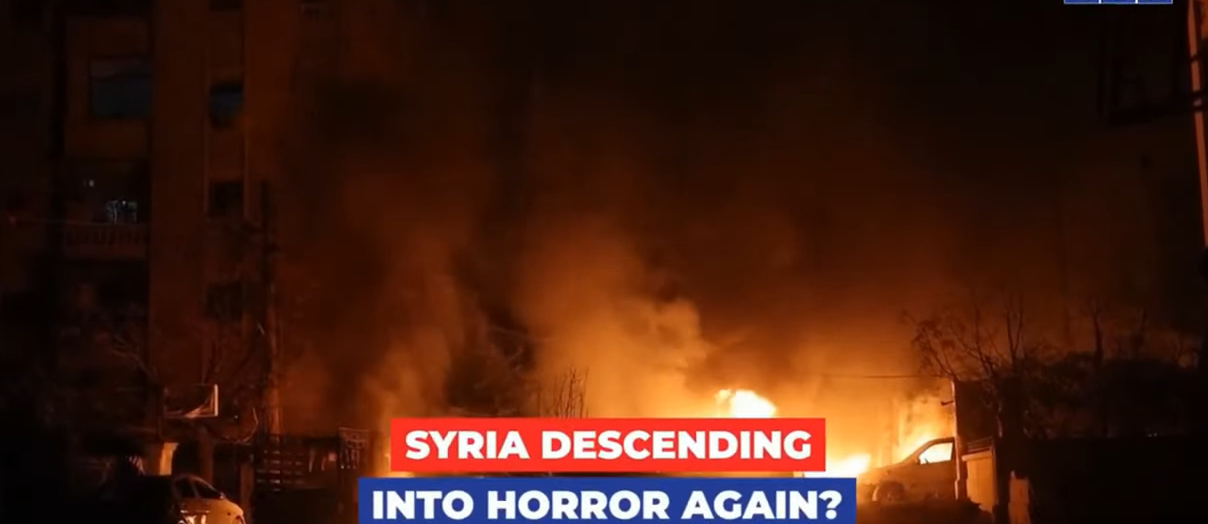Mama Tamali Lader (2004), mother of the first casualty of Amin’s firing squad sun-bathing.
“Amito mulu cogo pa latin na ma peya ato. Amito Museveni bene ocul kwor pa latin na, Amos Obwona”, she tells this reporter in 2004, literally meaning; “I want to touch the bones of my son before I die. I want Museveni to pay reparations for the death of my son, the late Amos Obwona”
LIGHTSare about toblow out for TAMALI LLADER, whom I consider as my FRONASA ‘heroin’ in resilience during liberation struggles in Uganda history. Tamali Lader, says she was born at the time when Rwot Olya’s sons of Attiak chiefdom, one of the most prominent chiefdoms in Acholi, northern Uganda, were fighting each other for his seat. Rwot Olya wasabout to succumb due to ill health and age.
I found Tamali Lader, in Attiak Protected Villagein 2004. She may also breathe her last breath anytimethen,unless an urgent rescue operation was carried out to rescue her and make her get her will.
A rescue mission similar to the one which rescued a woman whogave birth to a health bouncing baby on top of the tree during the worst floods in history, that swept through Mozambique in 2000.
I found her sun-bathing in the morning and was sitting on an old goat skin. She could no longer walk, but only crawls like a baby. Her voice was faint. The washroom (latrine) was about fifty meters away and she would crawl there to answer nature’s call.
Tamali Lader wantedan opportunity to touch the bones of her son, the late Amos Obwona,and also give him decent burial. The late Obwona, wasexecutedby ‘the first ever recordedfiring squad in Ugandan history as others in Acholi sub-region were heading for exile throughSudan for an expedition commonly referred to as yango lyec(skinning killed elephant).
“Amito mulu cogo pa latin na ma peya ato. Amito Museveni bene ocul kwor pa latin na, Amos Obwona”, she tells this reporter in 2004, literally meaning; “I want to touch the bones of my son before I die. I want Museveni to pay reparations for the death of late Amos Obwona”
She lived long enough since the death of her son, and since Museveni ascended to the leadership seat, to have received her wish if the National Resistance Movement government was willing to listen to her. The Monitor Publications Limited editors also trashed the 2004 article, which could have been a game changer for her.
This execution was carried out on February 10, 1973, north of the offices of Gulu Municipal Council. Two people, Amos Obwona and John Labeja, were executedthat fateful morning on allegation by Idi Amin’s soldiers that the two were training gorillas to topple his two-year old regime.
Whereas leaders like the late Peter Oola Lagara (RIP), were sending their recruits through Dibolyec, Lokung Sub-County, Kitgum district, thereby risking the lives of the youthsas evidence by the massacre of probably hundreds of them by Anyanya Southern Sudanese rebels at Dibolyec;but for yet to be explained reasons, others like Akena p’Ojok and his visitor, Yoweri Kaguta Musevenil, who instead of proceeding ahead with their recruits as Peter Ooladid, decided to remain behind at Pupwonya Parish, Attiak and established the first anti-Amin training camp there.
Akena p’Ojok is an elitist son of the village, thena civil servantworking in Kampala had escaped Amin’s henchmen who were killing every sundry Acholi civilservants includingpolice, prison, and army officers indiscriminately and which killings sent many of them to flee for dear lifeand sought exile lifeabroad.
Whereas other youths who were to travel to Dar-es-Salaam, Tanzaniato join deposed former President Milton Obote would pass through Attiak to South Sudan, Akena p’Ojok invited his erstwhile friend, now turned foe, Yoweri Museveni, to his home village of Pupwonya parish, Attiak sub-county, in present Amuru district where they established the first ever anti-Amin’s military training camp.
Akena p’Ojok now now lives a quiet self-imposed exile life in London after serving prison terms given him by his former friend, Yoweri Museveni. Akena p’Ojok was lured back into UPC from his splinter Save Uganda Movement (SUM)party. He who was viewed by many in Acholi elites as a closed associate of Mueveniwhen heserved Obote II government as minister of Posts and Telecommunication.
This was the birth of Mr. Museveni’s Front for National Salvation (FRONASA) movement, a gorilla outfit meant to depose Idi Amin. He was forced to abandon the two training camps at Attiak in present day Amuru district and at Odek in present day Omoro district after Idi Amin’s henchmen learnt of it leading to the firing squad.
He was forced out of Uganda and later transferred to Dar-es-Salaam to join the others who had gone there earlier. He operated independently while there and refused to merge FRONASA with the joint Uganda National Liberation Front/Army (UNLF/A) but operated as a separate army during the time Idi amin was overthrown on April 11, 1979.
Mama Tamali Lader was part of the statistics of the slow genocide taking place in Acholi land, when Moslems were marking the end of the end of their holy month of Ramadan on Monday, October 23rd, 2004. This prosecuted, neglected, despisedand once proud tribe called Acholi, livedeither is concentration camps commonly referred to as “abattoirs”, refugees, or are luredby auras of green pastures, inhabitable and deliberated ghettoes, thereby causing unprecedented “the world’s most forgotten humanitarian crisis” which neededurgent attention as former United Nation envoy, Mr.Jan Egeland asserted to world ears who cares to listen at all.
Another equally powerful messageby another former UN envoy, Dr. Olara-Otunnu,who described the situation which unfolded in northern Uganda as”a slow genocide” which was unfolding in Northern Uganda, as world bodies, responsible for reversing the trend, were watching in complete silence.
Dr. Olara-Otunnu, who is a son of the soil and a critique of the regime in Kampala, was stripped of his nationalityand denied the opportunity to become secretary General of the UN, whom the regime in Kampala believed,was the one who sponsorsthe Lord’s Resistance Army (LRA), which has failed to topple Kampala overtwenty years of protracted futile attempts.
Museveni refers to LRA as “lepers “who should never be touched by anyone because their images are skilfully, craftly and scientifically defined by using the latest communication technology possible and permanently sealed as the image of killers and terrorists and are tainted with bloods of innocent people.
–
HISTORY OF REBELLIONS IN ATTIAK
Many people remember Attiak Township for being the scene of the gruesome 1995 massacre by the LRA, who were being commanded by their very own son and deputy LRA Commander,Lt. Gen. Vincent Otti.On that fateful day, which is being commemorated every year, saw over 300 innocent civilians, mostly students of Attiak Technical College, massacred in cold blood.
But, inAugust 1986, the first bullet, which launched the now over thirty-year-old rebellions in Uganda, was fired at the NRA soldiers in Bibia military barrackslocated in Attiak. This was by a newrebel movement, the Uganda Peoples’ Défense Army (UPDA), just 16 miles awayfrom the common border with South Sudantowards Juba.
The UPDA claimedthey were forced to launch an attack asself-defence and survivalafter their refugee camp located at Magwi in South Sudan was attacked and looted bare by the Sudan People’s Liberation Army (SPLA). The UPDA believed the attack and looting was instigated by Mr. Museveni, who was a very close friend of SPLA leader Dr. John Garang, with whom they went to university together.
A Source, who preferredanonymitytold this reporter, that Otti decided to leave service in the NRA, now UPDF, after having been integrated from the UNLA whom the NRA defeated in 1986because, itwasalleged that, in one of their gruesome early operations to alienate UPDA rebels and prevent thecommunityfrom supporting the new insurgency, the NRA killed Otti’s brother who was a student at Makerere University. Sources said thatwhen Otti leant of the killing of his brother, he became so angry that he defected and joined the rebellion where he has since remained.Unlike his boss Joseph Kony, who said he was not the one who initiated rebellion in Northern Uganda, Otti has never offered his side of the story.
Eyewitnesses told this reporter that it took the soldiers who executed the two sometimes to kill the first victim, Amos Obwona (RIP), several bulletswere usedto finish him offbefore theyexecutedanother victim,John Labeja (RIP) from Odek sub-county in Omoro district. Their bodies have neither been recovered, nor government offered compensation to their families.
The following day, January 11, 1973, Amin sent his henchmen forthe blood of Shaban Nkutu, (RIP), the Minister of Works and Housing in Obote Igovernment and father to Conrad Nkutu, former Monitor Publications Limited Managing Director..
OnNovember 3, 1979, the former President of Uganda, the late Godfrey Lukongwa Binaisa, honoured them as national heroes by unveiling a memorial stone at Boma Ground, which used to be the official ground for national functions, located between the Resident District Commissioner’s (RDC)Office and the abandoned Presidential state Lodge.
Museveni has never addressed a rally on this ground except when he came to thank the people of Gulu for voting Rtd. Col. Walter Ochora-Odoch as new LCV Chairman of Gulu in 1996. Museveni said Ochora was like tobacco blended with spices because he was a soldier and movement supporter at the same time.
Government released a magazine onOctober 9, 2006 during the44th National Independent day celebration in which namesof all recognized national heroes are published. The list includedthe late Dr. Mathew Lukwiya who died of Ebola in 2000.Names of the three true national heroes were missing from the list of the official national heroes.
Before she died, she told this reporter in 2004 that her only wish was to touch and feel the smoothness of the bones of her late son, Amos Obwona; and also for Museveni to pay reparation, CULU KWOR, of her son which would kickstart the process of reconciliation with Acholi through the traditional rites of MATO OPUT. She never lived to see her will fulfilled.
When campaigning for 2011 re-election in 2009, President Yoweri Museveni un-veiled a few houses built by army Engineering brigade for a few FRONASA combatants including the two victims of firing squad and requested the beneficiaries of the families of former FRONASA combatants to form an association where government can support then financially.
This story was first written in 2004 and edited in 2020







